Category: Idaho Army National Guard
Children of National Guardsmen “survived” summer camp
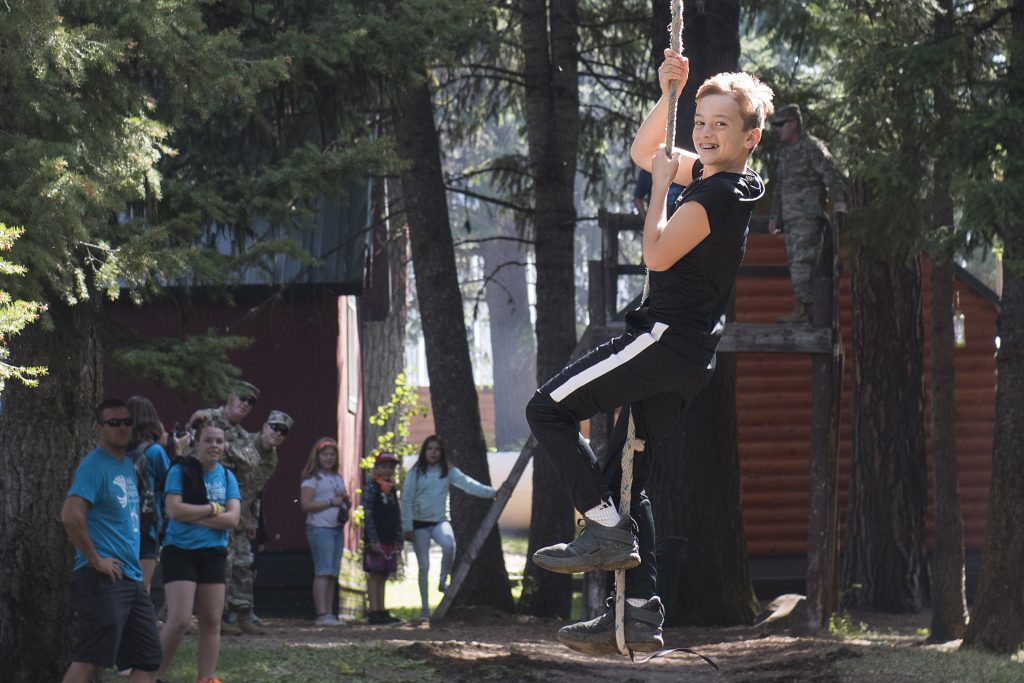
Story by Master Sgt. Becky Vanshur
124th Fighter Wing
McCall, IDAHO – After a week away from their parents, 115 children of Idaho Army and Air National Guardsmen not only survived the “Survivor”-themed summer camp, they thrived. The event-filled camp was held Aug 12-16 and was designed to build resiliency and strength in youth of military families.
“This camp is a small token of our appreciation for these children,” said Brig. Gen. Farin Schwartz, assistant adjutant general-Army, Idaho Army National Guard. “We realize that we impact the lives of the youth and appreciate the sacrifice of each and every one of these children, and what they do to support their mom or dad when they are away.”
Idaho National Guard Child and Youth Programs invite children from families in the Idaho National Guard to a winter camp and a summer camp each year. This year’s summer camp theme was “Survivor – Camp vs. The Camper” held at Quaker Hill Camp in McCall.
Activities included archery games, art classes, creative STEM challenges, inner reflection classes, lakeside water activities, a peer pressure and stress management class, a ropes team-building course, team-building races, and a zip line confidence-building course.
“All activities here are fun, but they are based on strength and resiliency training,” said Lt. Col. Douglas Uphoff, IDNG family program director. “The parents of these children could be at risk for a deployment at any time. We are enabling the children to hopefully cope with the stress of their loved ones leaving.”
Older children had the opportunity to volunteer as teen leaders. The child and youth programs are designed with opportunities for youth to gain leadership skills, feel valued, and interact with their peers.
“I love this camp, I have made a lot of friends,” said Gabbie Barton, a participating child at the camp. “I have learned that I am strong.”
Many of these military children shared common experiences with each other during the activities and know each other from past events.
“This camp has been so fun and I learned a lot,” said Lillyan Lowery, whose mother serves in the Idaho Army National Guard. “I have made all of these new friends that I can hang out with after, like her, both of our moms are in the Army together.”
It doesn’t matter how long the deployment is, the goal is for campers to build networks including other children with a similar background. Children at the camp know that their newly bonded friends are also going through the same situation and might have similar issues.
“It’s not easy for children and spouses to have us be in the military,” said Schwartz. “But it is very necessary for us to go out and do what is needed in the defense of our nation.”
Employers had outreach opportunities with the two-day ESGR Boss Lift
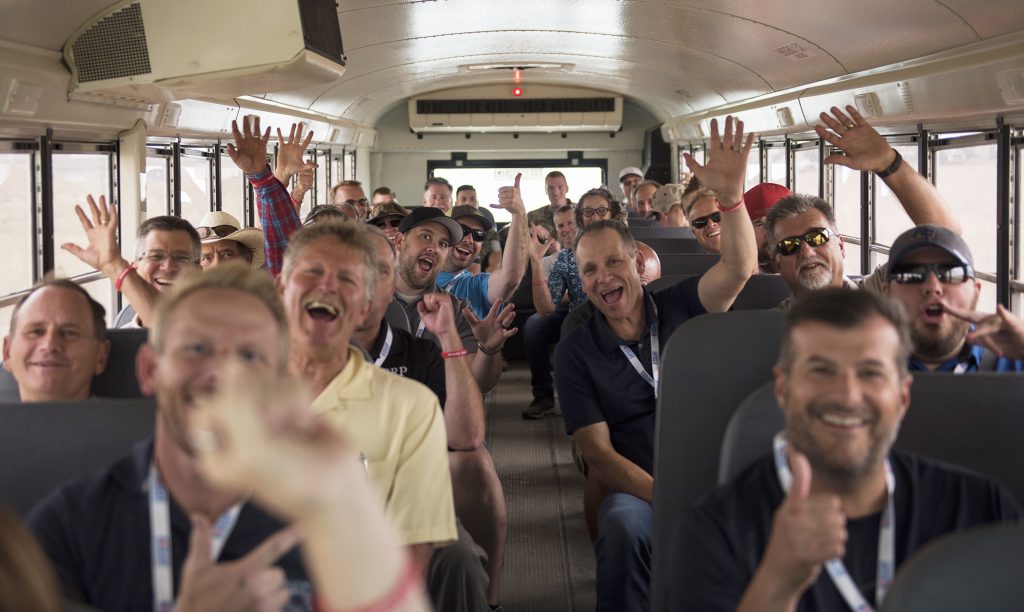
IDAHO ARMY NATIONAL GUARD, UNITED STATES
Story by 2Lt. Crystal Farris
More than 100 National Guard and Reserve employers and supervisors traveled to Gowen Field from across the state today to participate in the Idaho ESGR’s annual Boss Lift.
The two-day event gives participants a first-hand look into what their Soldiers, Marines and Airmen do away from work approximately 36 days of the year for military training.
“We enjoy tremendous support from our employers and the ESGR throughout Idaho and we do not take that for granted,” said Maj. Gen. Michael Garshak, adjutant general of Idaho. “Boss Lift is a great opportunity to create awareness of our missions in the Idaho National Guard and Reserves and to express our appreciation to those employers and the community who contribute to our mission readiness.”
ESGR aims to promote, recognize and develop employer support for Guard and Reserve service through employer outreach opportunities. As part of Boss Lift, Citizen-Soldiers, Marines and Airmen invited their employers to walk a day in their boots touring various training simulators, Gowen Field and Orchard Combat Training Center facilities and ranges, aircraft and other military hardware used by the Idaho National Guard and Reserve units for training. Additionally, Idaho Army National Guard, US Army, Marine Reserve and Idaho Air National Guard representatives were available to answer questions from employers on machinery and provide insight into the life of a military member.
Wendy Lovitt, who supervises Airman Melynda Scheller in her nursing job at Saint Alphonsus Regional Medical Center in Boise, said Scheller was really excited to invite her to Boss Lift.
“Melynda really wanted me to come so I could see everything that goes on in her Guard life,” said Lovitt. “See felt like my seeing it and being around it all would better help me understand things then if she were to explain them herself. I definitely feel more connected to her lifestyle after today.”
Training simulators offered employers a fun look into how service members develop tactical and technical skills in combat operations from a controlled in-door environment. The tour included the 124th Fighter Wing’s A-10 Thunderbolt II and the Idaho Army National Guard’s M4 rifle and HMMWV simulators.
The Idaho Army National Guard’s 1st Battalion of the 183rd Assault Helicopter Battalion flew employers in UH-60 Black Hawks over the vast terrain and world-class military ranges of the Orchard Combat Training Center. For some passengers, it was their first time in a helicopter and for others it offered insight into the austere conditions service members train in throughout the year.
“It is important for employers to understand what their service members do when fulfilling their military commitments,” said Cindy Reese, ESGR state chair. “This event gives them the opportunity to see what their employees do in these times, how they do it and why.”
Idaho Army National Guard returns from Guatemala
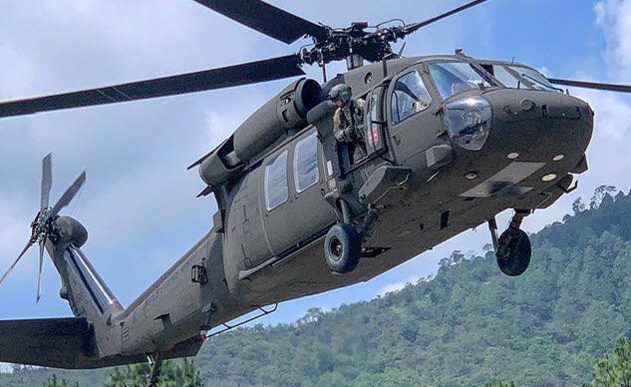
Courtesy story
Idaho National Guard
Approximately 150 Soldiers from Idaho’s 1st Battalion of the 183rd Assault Helicopter Battalion returned home Saturday after deploying to Huehuetenango, Guatemala, in support of Beyond the Horizon 2019.
During the operation, Idaho Army National Guard aviation Soldiers provided casualty evacuation support and equipment transportation for U.S. military engineers and medics building local schools and medical clinics.
“We had the opportunity to change lives and be part of a mission that brought dramatic change to the economic growth of Huehuetenango,” said Maj. Bryan Reid, the unit’s operations and training officer. “The experience was life changing and I am grateful to have had the opportunity to participate.”
Soldiers from the unit consisting of crew chiefs, mechanics, petroleum specialists, signal specialists and supply personnel rotated through Guatemala in two-week rotations from April 28 to July 27. They completed 50 missions and 210 flight hours, to include transportation of 600 passengers and 9,000 pounds of cargo.
In addition, the Idaho Army National Guard Soldiers conducted joint training with soldiers from the Guatemalan Armed Forces. The training gave participants the opportunity to share skills and practice loading injured individuals into UH-60 Black Hawks.
“The training provided unique opportunities that challenged everyone throughout our missions,” said Chief Warrant Officer 3 K Kirkendall, Idaho’s aviation training officer. “I’ve never experienced flying missions in an environment such as this and it will forever leave a mark on my career as a pilot.”
Beyond the Horizon is a U.S. Southern Command-sponsored, joint foreign military humanitarian civic assistance exercise. Hundreds of Active Duty, National Guard and Reserve members from all services participate annually to help build relations with the host nation.
Idaho Army National Guard Soldier plays Carnegie Hall

CPT Robert Taylor
Idaho Army National Guard
There’s an old joke that a couple on a New York City street once asked legendary classical violinist Jascha Heifetz how to get to Carnegie Hall. Without missing a beat or looking up, he replied with, “practice, practice, practice.”
After decades of practice, Idaho Army National Guard Chief Warrant Officer 2 Micah Strasser found his way to the prestigious concert hall last week where he performed with the Millennial Orchestra July 12.
“It’s the number one recognized music venue in the country,” Strasser said. “As a musician, there’s no bigger venue to play. It wasn’t on my bucket list, but it’s far beyond my expectations as a musician.”
Strasser played in the Idaho Army National Guard’s 25th Army Band for 23 years until he left the band to become a signal warrant officer in 2017. He joined the Treasure Valley branch of the Millennial Choirs and Orchestras in 2015 because he wanted to keep playing.
“Music’s always been a part of me,” he said. “I like the creation of it and the group effort it takes.”
Strasser got into music when he was in middle school after he saw his uncle on TV playing the clarinet during the Macy’s Thanksgiving Day Parade. Strasser also played the clarinet but often found himself looking behind him to the band’s percussion section.
He said he was always drawn to the percussion instruments and tried out for the drum line entering high school. He has played percussion since and currently plays the timpani for the orchestra. A timpani is a kettledrum that provides bass to the orchestra as well as pitch, which drummers adjust using a foot pedal throughout the performance.
Strasser played the timpani during his performance at Carnegie Hall. The Millennial Choirs and Orchestras plays primarily classical music and is spread out in five states. More than 3000 members from multiple locations performed in New York City together over three separate performances.
“The music, which was religious in nature, was very powerful and brought the audience to its feet multiple times,” Strasser said. “It wasn’t even ever a thought in my mind that I would end up performing there someday, but I am so thankful I got the opportunity to do so.”
Before becoming a warrant officer, Strasser was a sergeant first class and the band’s rock band noncommissioned officer in charge. He was also the 25th Army Band’s audio engineer.
“Every time you get a new piece of music in front of you, you’re using your brain a lot,” he said. “Then in performance, you’ve got the pressure of all that going on. It’s an adrenaline rush when you’re playing something for an audience.”
In addition to playing in the Millennial Orchestra, Strasser also plays in seasonal orchestras in the Treasure Valley and played in the Boise State University’s Blue Thunder Marching Band for two years in college. During halftime of the team’s 1998 game against Utah State, Strasser proposed to his wife on the school’s famed blue turf.
In addition to playing in New York City Friday, Strasser and his wife spent a week in the city to celebrate their 20th wedding anniversary.
Two Idaho Guardsmen earn air assault badges
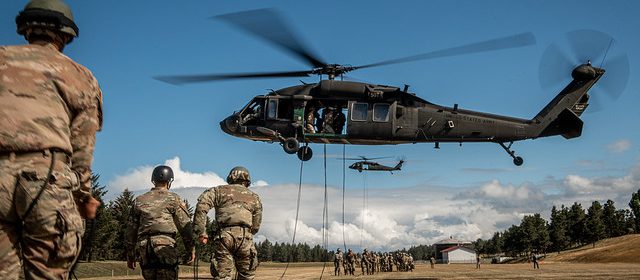
Capt. Robert Taylor
Idaho Army National Guard
Two Idaho National Guardsmen graduated from the U.S. Army’s Air Assault School June 28 at Camp Rilea, Oregon. Idaho Army National Guard Soldier Cadet Porter Haux and Idaho Air National Guard Airman Senior Airman Matthew McKee completed the 10-day course to earn their air assault badges.
In addition to completing air assault school, McKee also graduated from the Army’s Rappel Master Course July 3.
“They were both good courses,” McKee said. “It was a good experience.”
McKee, a tactical air control party specialist with the 124th Fighter Wing’s 124th Air Support Operations Squadron, spent eight years in the Army Reserve before joining the Idaho Air National Guard in January 2018.
He becomes the unit’s third rappel master, which gives the squadron the required number of qualified airmen to conduct its own rappel training. The unit plans to train with the Idaho Army National Guard’s 1-183rd Assault Helicopter Battalion, which flies UH-60 Black Hawks.
The battalion’s Black Hawks supported the training courses, which included the Army’s Pathfinder Course.
Haux, a junior in Boise State University’s ROTC program, said he attended the course to become a better Soldier.
“I figured air assault course was something that I could do to better myself and further my career while doing something few people learn how to do,” he said. “I got paid to learn how to rappel from a helicopter, which is something people probably would pay a lot of money to learn how to do.”
Haux has served in the Idaho Army National Guard since November 2017. His father, Maj. Kelly Haux, is an active duty officer.
“It’s been my dream to be a Solider since I was capable of dreaming,” Haux said. “I always wanted to be a Soldier like my dad.”
The air assault course featured 10 days of instruction in three phases; combat assault operations, sling load operations and rappelling.
In phase one Soldiers and Airmen received training on combat assault, aircraft orientation, aircraft safety, aeromedical evacuation, pathfinder operations and hand and arm signals. In phase two they learned to prepare, rig and inspect various military sling-loads for equipment and vehicles such as the M998 HMMWV and M1102 Cargo Trailer. In the final phase Soldiers received instruction on tying a rappel seat, hook-up techniques, lock-in procedures, belay procedures and rappelling.
Throughout training students received several written and performance-oriented tests, conducted multiple runs and foot marches and rappelled from multiple towers and rotary wing aircraft.
Towards the end of the course, Soldiers demonstrated what they learned while repelling from a Black Hawk 90 feet above the ground.
Back to Newsroom
Join the Idaho Air National Guard
Grounded: Idaho pilots land to work with Idaho Soldiers
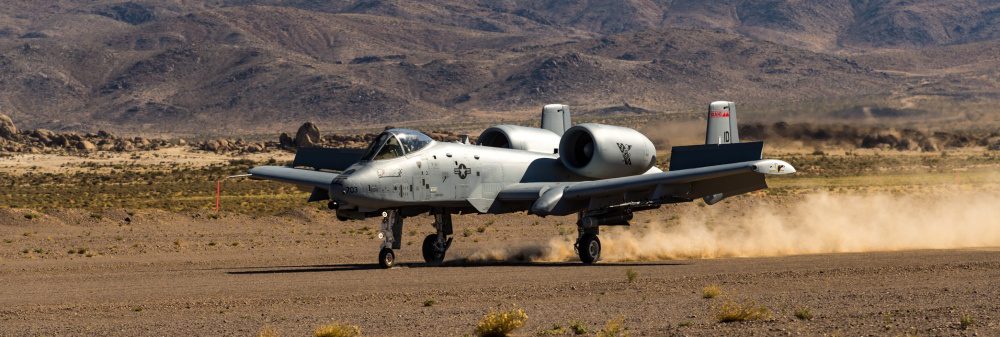
FORT IRWIN, CA, UNITED STATES
06.08.2019
Story by Capt. Robert Taylor
During combat operations, there’s no substitute for the ability to talk face-to-face with a supporting unit. For pilots from the 124th Fighter Wing’s 190th Fighter Squadron, this means landing their A-10 Thunderbolt IIs in a dry lake bed to discuss current operations with the 116th Cavalry Brigade Combat Team’s air liaison officer while supporting the brigade’s National Training Center rotation at Fort Irwin, California, June 4 – 9.
“We can talk about the latest conditions on the battlefield,” said 124th Air Support Operations Squadron Maj. Johnny Reyes, the brigade’s air liaison officer. “They can get the latest update on the commander’s intent for use of close air support.”
The Idaho Air National Guard’s 190th Fighter Squadron is supporting the 116th CBCT’s month-long NTC rotation through its participation in Green Flag-West 19-8, a realistic air-land integration combat training exercise. Pilots launch out of Nellis Air Force Base in Las Vegas to provide close air support to the 116th CBCT in the brigade’s fight against opposing forces provided by the U.S. Army’s 11th Armored Cavalry Regiment.
Pilots spent the week completing qualification landings on the NTC’s Freedom Landing Strip to be prepared to land in austere environments in a combat environment.
“The training gives us confidence we can do it in a combat situation if required,” said Lt. Col. “Champ” Clark, 190th Fighter Squadron commander.
Landing in austere conditions is a task the A-10 Thunderbolt II is well designed for, Clark said. The aircraft’s twin engines are placed high on the aircraft, minimizing the risk the engines could be damaged during landing. Its tires are wide and rugged. Its high ground clearance assists with landing on less-then-ideal surfaces.
“It’s the same as landing on a paved runway, but different,” Clark said. “You have to ensure you land soft and you can’t really break as much as you’d like to. The runway is a little rougher. It’s a little more challenging, so you have to be more careful.”
Once pilots land, they have the ability to communicate directly with Soldiers and Airmen on the ground, including the unit’s air liaison officer, the ground force commanders and their staffs.
Reyes, and the 190th ASOS, is aligned with the 116th CBCT. Because the 124th Fighter Wing’s and the 116th CBCT’s headquarters are located less than a mile apart on Gowen Field in Boise, Reyes is able to fully integrate into the brigade’s staff. Reyes and the unit’s joint terminal attack controllers deploy anywhere the 116th CBCT does to coordinate the use of close air support to support the brigade’s deep fight. The 190th Fighter Squadron’s participation in Green Flag-West happened to coincide with the brigade’s NTC rotation.
“It’s really cool to work with Idaho Army National Guard Soldiers,” Clark said. “Those relationships we build at home, we continue out here and take back with us.”
Rayes said it would tie up brigade communication channels for a significant period of time to communicate all of the latest updates to pilots in the sky. In addition, pilots are able to offer updates to the unit’s maps based off what they saw on their way to the brigade’s tactical operations center, which helps improves the brigade’s common operating picture.
“Pilots serve as an extension of the tactical air control party and get a lot of work done in the deep fight,” Reyes said.
The 116th CBCT’s tactical air control party consists of Reyes, more than a dozen 190th ASOS JTACs, two Marine JTACs and five members of the Brazilian Special Operations Command.
The 116th CBCT, is comprised of 3,000 Soldiers, including 1,800 from 137 Idaho communities and 1,200 Soldiers from the Montana, Nevada and Oregon Army National Guards. The unit is completing a month-long rotation at the National Training Center to build combat readiness and improve Soldier proficiency in their wartime missions. More than an additional 1,000 Soldiers from units in nine Army National Guard states are supporting the 116th CBCT’s rotation. The 116th CBCT is one of five National Guard armored brigade combat teams.
Intel Center of Excellence deputy general visits National Training Center
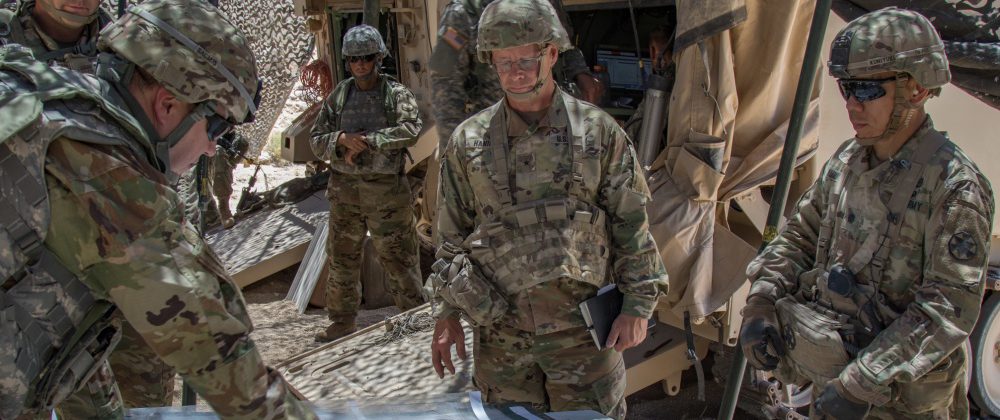
FORT IRWIN, CA, UNITED STATES
06.05.2019
Story by Capt. Robert Taylor
Brig. Gen. Michael K. Hanifan, deputy commanding general, United States Army Intelligence Center of Excellence, visited with 116th Cavalry Brigade Combat Team’s intelligence officers and sections June 3-4, 2019, at the National Training Center in Fort Irwin, California, to see firsthand how the Army’s school for professional training of military intelligence prepares Soldiers to operate in a combat training center environment.
“I saw some sharp leader who knew what they were doing,” he said. “We need to equip them with the correct equipment and training.”
Hanifan said the school, located at Fort Huachuca, Arizona, has recently made three chances to its training requirements to provide Soldiers with effective and relevant training to be successful in their units. Those changes include placing an emphasis on getting away from creating only digital products and enhancing analog skills; shifting away from training on counterinsurgency in favor of decisive-engagement operations; and offering more training in a field environment outside of a classroom
“The changes in our focus has been very affective,” Hanifan said. “We’re headed in the right direction.”
Hanifan saw the effect of those changes on full display as the 116th CBCT’s intel sections worked to track the enemy on the battlefield using a combination of digital systems and analog products in the most realistic decisive-engagement field training environment the Army provides.
Throughout the simulated battle against opposing forces provided by the U.S. Army’s 11th Armored Cavalry Regiment, brigade and battalion intelligence personnel work together to provide commanders at all levels with a common operating picture of friendly and enemy forces’ locations and dispositions.
Information flows up and down echelons across the battlefield to answer commanders’ priority intelligence requirements and to detect, find and destroy enemy assets using available assets, including non-lethal targeting options.
Information collected is analyzed and fed through the brigade’s planning process and current operation cell. Information collected on the battlefield is imperative for commanders and their staffs.
“As elements move forward, we provide the commander with the best enemy picture possible so he can leverage the combat power he has available to make the best decisions possible,” said Capt. William Miller, 2nd Battalion, 116th Cavalry Regiment intelligence officer.
Hanifan, who also serves as the assistant adjutant general, Nevada Army National Guard, believes the National Training Center is the hardest intelligence battle Soldiers will fight, specifically designed to prepare Soldiers for operations in a combat zone. The training provides intel analyst the chance to test their skills against an actual force.
“It’s very realistic,” Spc. Anna Tinseth said. “It’s not notional. What you see on the map is what you’re going to see on the battlefield.”
Tinseth, a 35F intelligence analyst assigned to the Oregon Army National Guard’s 3-116th Cavalry Regiment, said the hands-on experience she is receiving during the 15-day field training exercise is increasing her understanding of her role in a battalion headquarters.
“I’m starting to understand how effective intelligence can be,” she said. “We can better prepare our line units to know what they are going to face on the battlefield.”
The 116th CBCT, one of the National Guard’s five armored brigade combat teams, is completing a National Training Center rotation at Fort Irwin, May 24 – June 20. NTC provides the brigade with the opportunity to train against a near-peer opposing force, challenging Soldiers’ tactical proficiencies and their technical expertise. More than 4,000 Soldiers, including Soldiers from Army National Guard units in 13 states, are participating in the exercise.
Idaho National Guard marksmanship team trains with local Treasure Valley sniper police
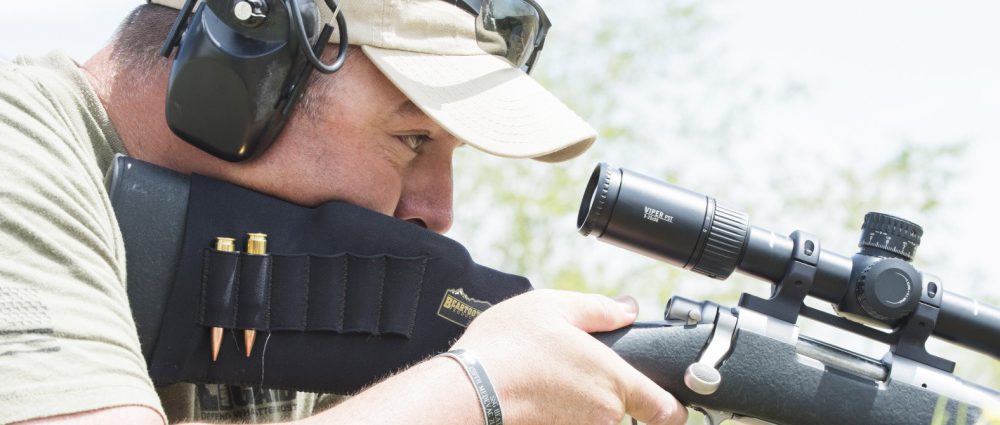
MELBA, ID, UNITED STATES
06.09.2019
Story by Master Sgt. Becky Vanshur
MELBA, Idaho – “Everybody wants to be a sniper, until it’s time to do the sniper stuff,” said Cpl. Brian Lueddeke, a sniper instructor from the Meridian Police Department. “It’s just what it is, right, the hard truth. We are called lizards because we are out there lying on the hot rocks baking ourselves, or we are up on a rooftop blanketed by snow in a blizzard.”
The Idaho National Guard marksmanship team participated for the first time in the urban and rural sniper training held in Melba by the Treasure Valley’s SWAT sniper element. The Meridian Police Department sponsored the course and the SWAT team instructors volunteered their time to produce the intense 50-hour, five-day course, held from June 3 through June 7.
Police officers from the Ada County sheriff’s office, Gem County sheriff’s office and Soldiers from Idaho National Guard completed their week of training with a certified qualification exam. These are essential skills necessary to operate effectively as a designated precision marksman, commonly referred to as DPM, or sniper.
The two most essential skills learned were marksmanship and field craft. Marksmanship is engaging select targets with consistent precision fire and the use of a bolt-action scope riffle. Field craft is the ability to effectively detect, observe and report critical information to their operational command while remaining in a concealed position.
“What are some things in the urban environment that can cause us problems when we are out on a mission? Sound. Yes, but that can also be a cover,” said Lueddeke. “People. Yes, the lookie-loos. Everybody flocks to where the police are and now you have all sorts of issues in the event that you run into an immediate threat situation and need to take a shot. Vision obstruction from buildings and wind compression problems can occur more frequently in the urban environment than in a rural environment.”
As the course concluded, a sniper now has the training and discipline to research an objective and pre-select locations where they can move into undetected to observe their objective.
“Everyone sees us as just shooters but that’s not really what it is,” said Patrol Officer Travis Woodbury, from the Nampa Police Department and a volunteer sniper instructor for the course. “It is a constant surveillance roll. We are information gathers before we are anything else. For example, if we gather enough information from a reconnaissance surveillance, and report it back, it might just be enough information to issue a search warrant from command.”
The city of Melba and Melba High School graciously volunteered classroom space, building rooftops and shooting ranges in support of the joint training.
The military and the police departments across the Treasure Valley have continued to work together throughout the years in real-world missions as well as in a training scenario like this one.
“The joint relationship between the Idaho National Guard and the Police Department is great. We love them, they love us,” said Patrol Sgt. Chris Bones, an Ada County SWAT member, who is also training to be on the sniper team. “I think what bolsters that relationship is a lot of deputies are either current military or former military, and that naturally forms a common bond, especially when we get into a training environment together.”
It may be the first sniper training for the Idaho National Guard marksmanship team Soldiers, but they foresee a future of continuous joint training.
The Idaho National Guard’s 2nd of the 116th Calvary Brigade Combat Team started their sniper program just over a year ago and formed their small sniper scout platoon.
“The marksmanship team is coming out here so that we can start building the foundation for future training within our own sniper program,” said Sgt. 1st Class Jared Frogley, the IDNG state marksmanship NCO in charge. “We are heavily involved with our sniper team and I believe we are going see this type of joint training continue.”
Command Sgt. Maj. Randolph takes cares care of Soldiers
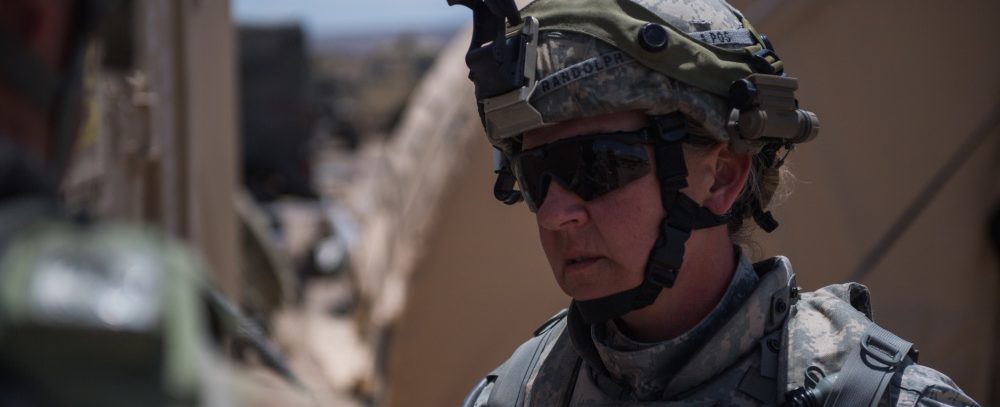
FORT IRWIN, CA, UNITED STATES
06.02.2019
Story by Capt. Robert Taylor
Command Sgt. Maj. Alice Randolph knows she’s the 116th Cavalry Brigade Combat Team’s senior female noncommissioned officer, but it’s not something she spends a lot of time thinking about.
“I identify as a command sergeant major,” Randolph said.
As the 145th Brigade Support Battalion’s command sergeant major, Randolph’s primary mission is the taking care of the battalion’s 300 enlisted Soldiers.
“Taking care of Soldiers means teaching them, training them and mentoring them,” she said. “The best part of the job is watching Soldiers grow throughout their careers.”
Randolph enlisted into an U.S. Army Reserve unit when she was 17 and four years later transferred into Idaho Army National Guard.
“It was the best decision of my life,” she said. “The Army has been really good to me.”
Randolph has served as a 68W combat medic throughout her career. She’s spent the majority of her career in the 145th BSB, including time as a platoon sergeant and company commander before she was appointed to the battalion’s top enlisted spot in May 2017.
“I love 145th BSB Soldiers,” she said. “They really are the best group of Soldiers I’ve worked with. With most of the unit located in Northern Idaho, we have to be close knit.”
The 145th BSB provides logistic support to the 116th Cavalry Brigade Combat Team. Its distribution company, A Company, and maintenance company, B Company, are both located in Post Falls. The unit’s brigade support medical company is located in Boise. The battalion’s headquarters is located in Lewiston, along with detachments from B and C companies. Forward support companies are attached to each of the brigade’s seven battalions to provide direct support.
As the battalion’s senior enlisted member, she serves as a member of the commander’s personal staff and provides him technical and tactical advice on the planning, training, preparation and execution of all unit missions. As the only female sergeant major in the battalion, she said it’s not uncommon for her to be the only female in senior brigade leader meetings.
“I’ve gotten used to being include in ‘gentlemen,’” she said, while adding she’s never felt she’s been treated differently throughout her career because she is a female Soldier.
The battalion is currently supporting the 116th Cavalry Brigade Combat Team’s National Training Center rotation at Fort Irwin, California, which offers the unit the opportunity to sustain one of the National Guard’s five armored brigade combat teams across an astute environment roughly the size of Rhode Island. The U.S. Army’s 11th Armored Calvary Regiment provides the brigade with a near-peer opposing force, challenging Soldiers in the unit’s tactical proficiencies as well as its technical expertise.
“No matter how hard things get, the Soldiers make it fun and get the job done,” she said.
Like father like sons, Bundy brothers serve together
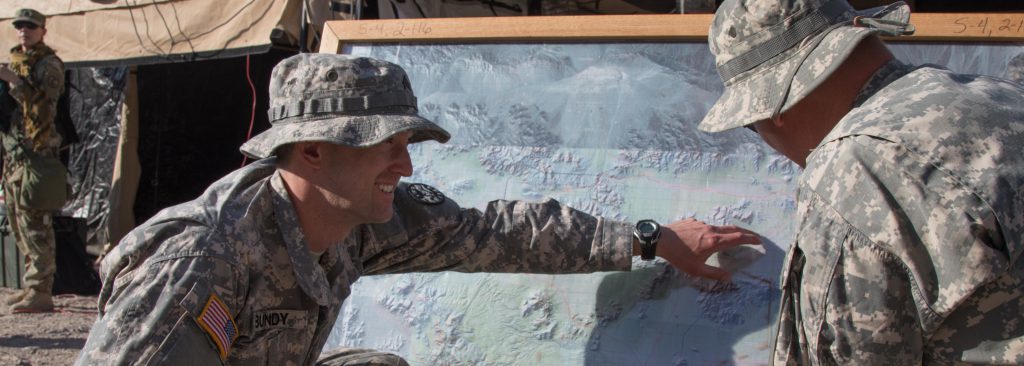
FORT IRWIN, CA, UNITED STATES
06.01.2019
Story by Capt. Robert Taylor
Idaho Army National Guard Soldiers 2nd Lt. Zane Bundy and his big brother Sgt. Nathan Bundy take after their father, Mountain Home city councilman Matt Bundy, in a number of ways.
All three work for the Mountain Home School District. Matt and Nathan both teach at Mountain Home High School and Zane is a substitute teacher who hopes to have his own classroom someday. In addition, all three either have, or are currently serving in the military.
Matt retired from the United States Air Force. Nathan and Zane both serve in the 116th Cavalry Brigade Combat Team’s 2nd Battalion, 116th Cavalry Regiment, headquarted in Caldwell. For the next couple weeks, both are participating in the brigade’s National Training Center at Fort Irwin, California.
“I was raised on the idea of serving my country,” said Nathan, who enlisted into the Idaho Army National Guard in 2012 as a 35F intelligence analyst.
Nathan is the intelligence section’s senior noncommissioned officer. His team’s job is to help analyze intel Soldiers in the combined arms battalion collect to help his battalion commander make good decisions on the battlefield.
It’s a position that’s vastly different than Zane’s job, who leads a platoon in Idaho’s only infantry company from his Bradley Fighting Vehicle.
“Serving together gives us a new dynamic in our relationship,” Nate said. “It’s a new common ground and a shared experience, but we’re also on different sides of the Army as an enlisted intel Soldier and an infantry officer.”
Zane joined the Idaho Army National Guard in January 2017 and later earned his commission in November 2017.
“I saw how great of an opportunity Nate had to be in the Guard so I thought I would follow,” Zane said.
At his commissioning ceremony, Nathan was the first to salute his younger brother of four years.
“I was really proud of him when he commissioned,” Nathan said.
Zane said he doesn’t get to see much of his brother during unit operations but that it’s always good to see him when the two cross paths. Both agreed that serving in the National Guard provides them with experiences they don’t get to have in the classroom as teachers.
“I enjoy both jobs,” Nate said. “Being able to serve part-time is a great experience.”
The 116th Cavalry Brigade Combat Team is completing a month-long rotation at the National Training Center to build unit readiness and increase Solider proficiency in their wartime missions. The unit will train against a near-peer opposing force provided by the Army’s 11th Armored Cavalry Regiment. More than 4,000 Soldiers, from more than 30 Army National Guard states, are participating in the exercise.
 Official Government Website
Official Government Website